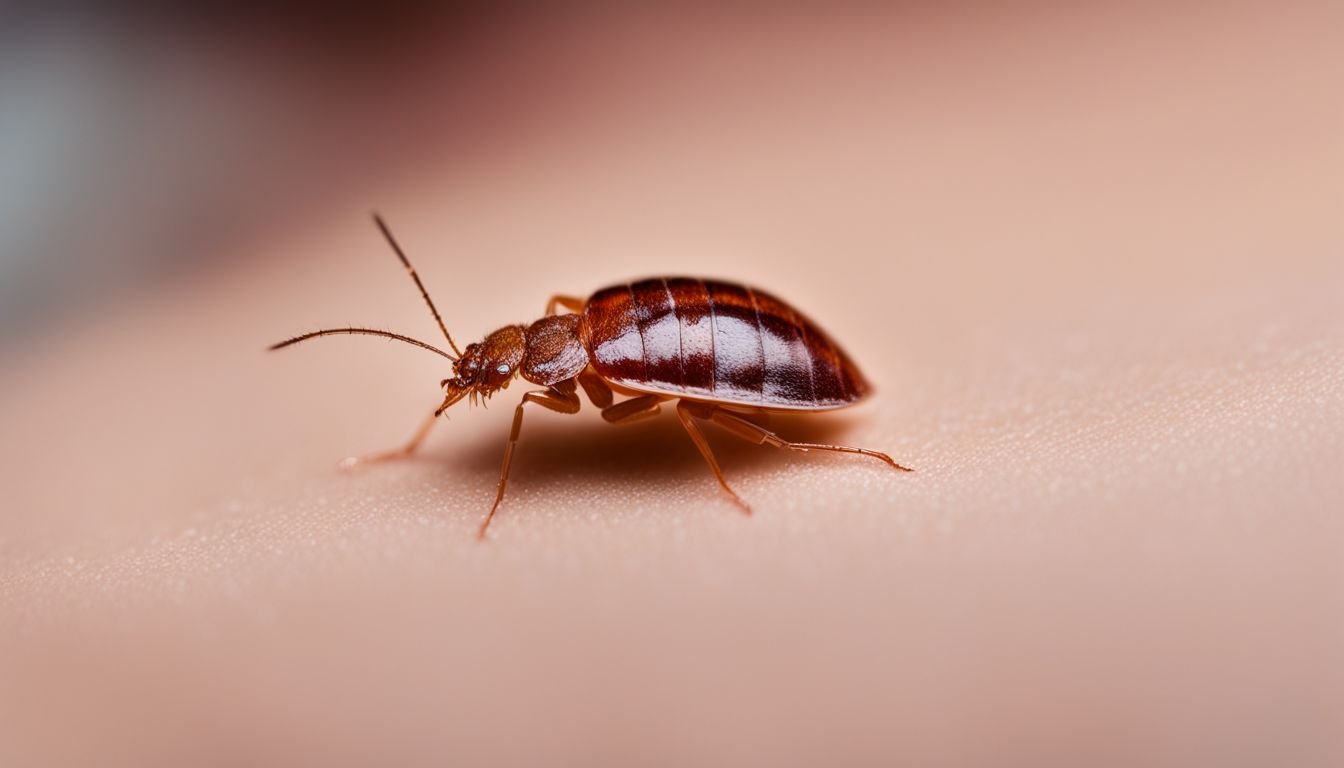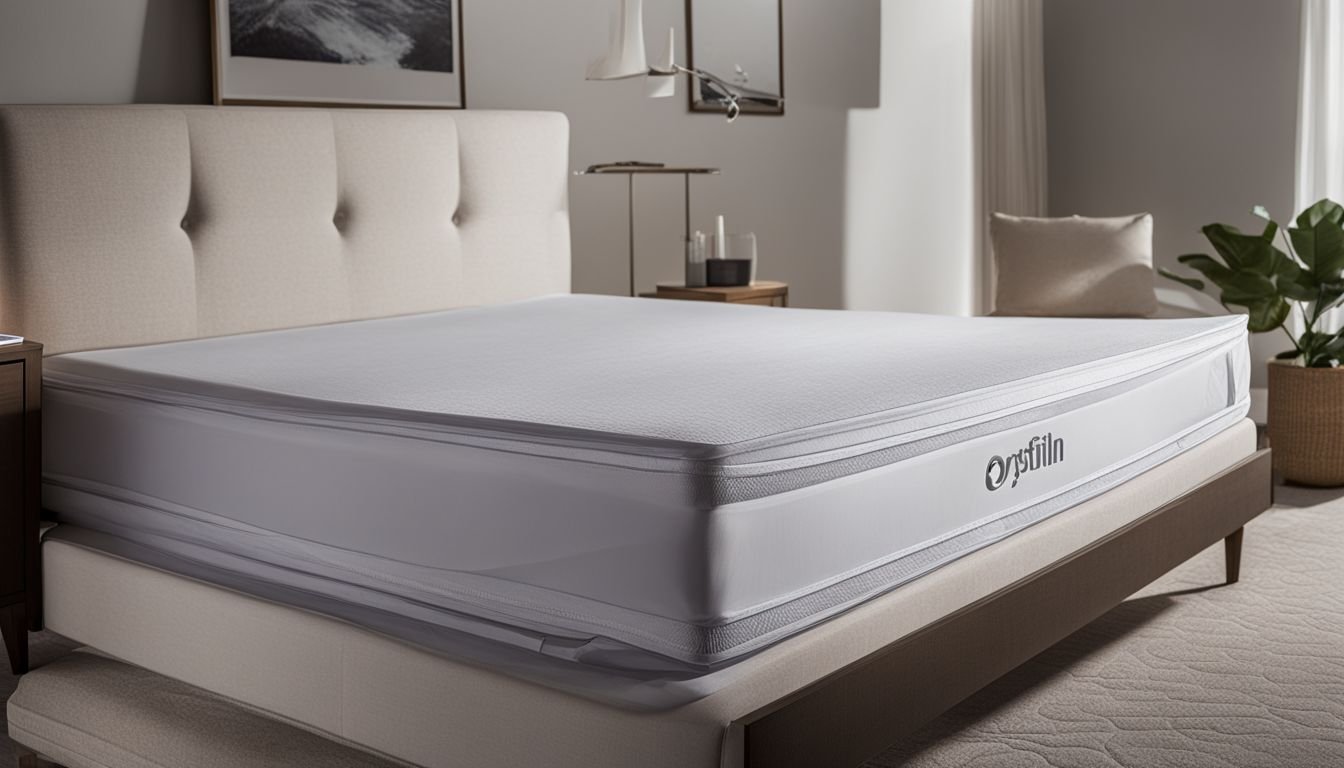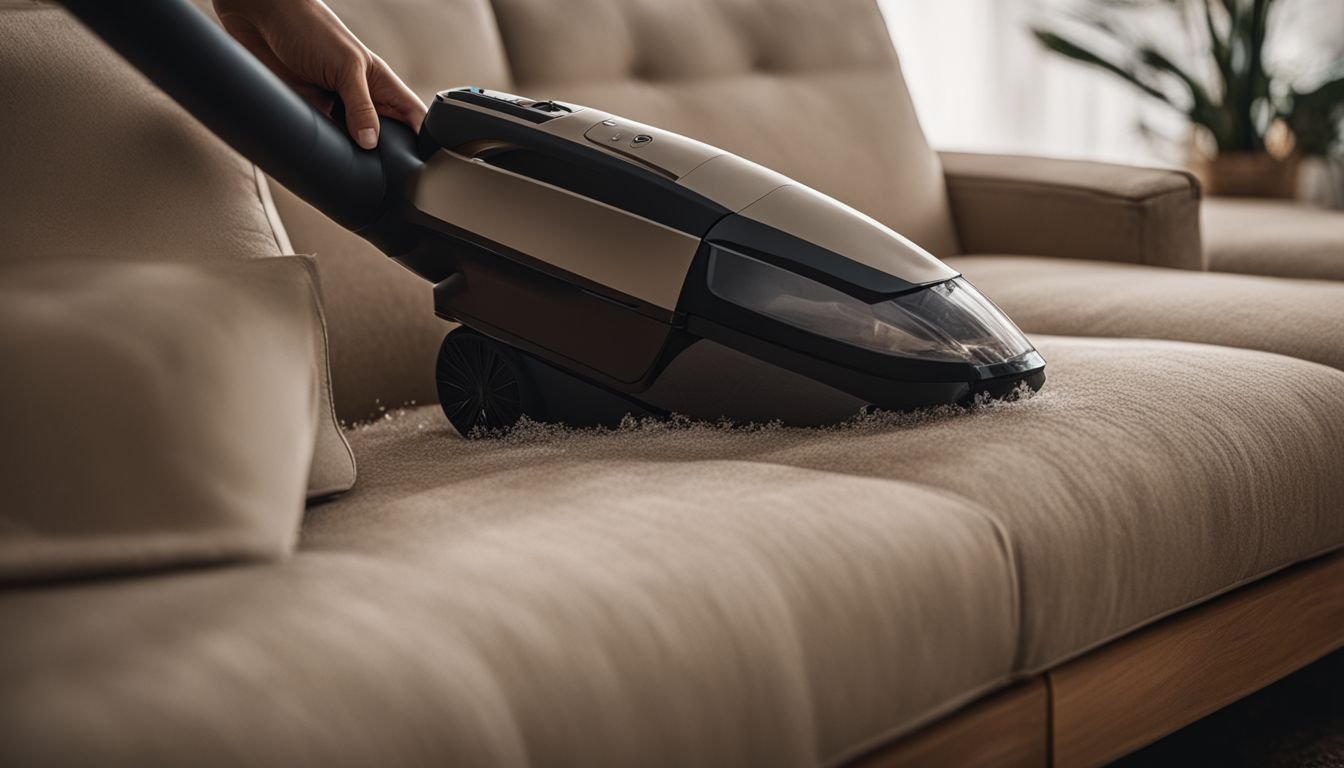Ultimate Guide To Eliminating Bed Bugs
Bed bugs are the uninvited guests that can turn any homeowner's life into a nightmare. These minuscule pests sneak into our beds and furniture, leaving behind a trail of discomfort and frustration.
With over a decade of experience in pest control, I have seen firsthand the havoc these tiny invaders can wreak on your peace of mind. My mission is to arm you with knowledge and strategies to reclaim your home from these stubborn intruders.
This comprehensive guide, punctuated by my field-tested insights, will be your roadmap to a bed bug-free haven. You'll learn not only how to eradicate them but also how to create an inhospitable environment for their return.
Unlocking the secrets to their elimination lies ahead—let's begin this crucial journey together. Read on; freedom from bed bugs is closer than you think.
What are Bed Bugs?
Bed bugs are small, reddish-brown insects that feed on the blood of humans and animals. They belong to the Cimicidae family and have evolved to become resilient pests that can thrive in various environments.
Description
Bed bugs are tiny, stealthy pests that can turn your home into their breeding ground before you even realize they're there. Adults are similar in size to an apple seed, with a brown, oval-shaped body that becomes redder and more elongated after feeding.
These insects specialize in hiding during the day and emerge at night to feed on human blood, causing itchy red welts on the skin.
Managing a bed bug infestation requires understanding these critters' habits. They sneak into luggage, clothing, and furniture with ease, making vigilance key in preventing their spread.
Due to their small size and flat shape, they can tuck themselves away in mattress seams, electrical outlets or even behind wallpaper—places where they often go unnoticed until it's too late.
With this guide's strategies for quick bed bug elimination methods and nonchemical treatment options, taking control of an unwelcome situation becomes manageable for any homeowner looking for natural bed bug remedies or nontoxic treatments.
Species
Understanding the various types of bed bugs helps in effective bed bug management. Different species have unique behaviors, but all are unwelcome guests in your home.
The most common invader is Cimex lectularius, the notorious bed bug that prefers human environments. This pest is known for its adaptability to different climates and often takes up residence in mattresses, furniture, and even behind wallpaper.
Tropical regions contend with Cimex hemipterus, a close relative that thrives in warm weather. Homeowners in such climates must be vigilant as these bugs can rapidly infest living spaces through luggage or second-hand furnishings.
Bat bugs, relatives of bed bugs, occasionally enter homes from neighboring bat populations. Although they prefer feeding on bats, they may bite humans if their natural hosts are unavailable.
Six distinct species feed on mammals and birds across the United States; it's essential to identify them correctly for targeted bed bug eradication efforts.
Young bed bugs—or nymphs—resemble their adult counterparts but are smaller and lighter in color. Recognizing these early stages prevents infestation growth and aids in complete removal.
Evolution
Bed bugs have shown a remarkable ability to adapt and survive in the face of challenges. Their origins trace back to the Middle East, but today they are worldwide pests. Over time, these tiny critters have developed genetic variations that make them tough opponents against common bed bug control methods.
This toughness includes a resistance to pesticides, once considered an effective way to deal with infestations.
Their adaptive strategies don't stop there; some bed bugs even sport thicker skin as a means of defense against chemicalfree extermination efforts. With such rapid evolution, certain groups of bed bugs may be on the verge of becoming entirely new species.
These evolutionary traits underscore why traditional DIY treatments and mattress bed bug removal tactics often fall short and emphasize the need for innovative solutions in preventing bed bug spread and managing infestations effectively.
Moving forward from understanding how these pests evolve helps us identify signs early on before an infestation grows out of control.
How to Identify Bed Bugs
Look for small, reddish-brown insects about the size of an apple seed and check for dark spots on your mattress or furniture, which could be bed bug excrement. Inspect areas where they may hide during the day, such as cracks in walls or crevices in furniture.
Early detection is crucial in preventing a full-blown infestation.
Signs and Symptoms
Bed bugs can cause small, itchy bites on the skin, resembling mosquito bites. Some people may experience severe itching and swelling, while others may have no reaction at all. An allergic reaction to bed bug bites can result in blisters, hives, or intense itching.
Small, itchy bites: Bed bug bites often appear as small, itchy red welts on the skin, typically on the arms or shoulders.
Varied reactions: Different individuals may respond differently to bed bug bites – some may experience intense itching and swelling while others may not react at all.
Allergic reactions: In some cases, an allergic reaction to bed bug bites can lead to severe itching, blisters, or hives on the skin.
Red or rust-colored stains: Look for red or rust-colored stains on bed sheets or mattresses as these could indicate a potential infestation of bed bugs.
Visible bugs and eggs: Signs of infestation include live or dead bed bugs (adults and nymphs) as well as their eggs in infested areas.
Where to Look
To identify bed bugs, start by examining the seams, crevices, and folds of your mattress. Look for rusty or reddish stains and dark spots on your bedding or mattress, which may indicate their presence. Additionally, inspect the headboard, box spring, and bed frame for any signs of bed bugs.
Check the bedside tables and any nearby upholstered furniture as these are common hiding spots for bed bugs.
Inspect electrical outlets and switch plates near the sleeping area as they provide harborage for bed bugs.
Examine curtains and drapes around the bedroom, focusing on the pleats and folds where bed bugs can conceal themselves.
Look behind wallpaper, picture frames, and wall hangings in proximity to the bed as these areas can also harbor bed bugs.
Thoroughly examine clothing stored near the bed, such as in closets or drawers, as well as any clutter or personal items close to sleeping areas.
Early Detection
When it comes to early detection, being vigilant can prevent a full-blown infestation. Looking for rusty or reddish stains, dark spots, and pinpoint signs of bed bug infestations is key.
It's crucial to verify suspected bed bug bites by inspecting closely for the presence of the bugs themselves or tell-tale signs that they leave behind. Reactions to bed bug bites vary from person to person; therefore, relying solely on bites for detection is inadequate.
Confirming these pests through sighting them directly or detecting their signs like fecal spots, blood spots, egg cases, and shed skins ensures accurate identification.
Effects of Bed Bug Infestation
Bed bug bites can cause itching, redness, and swelling. They can also lead to anxiety and insomnia. Discover how to minimize these impacts and protect your home.
Bites
Bed bug bites can lead to a range of cutaneous reactions, from macules and papules to wheals and vesicles. Some individuals may display severe itching, blisters, or hives following contact with bed bugs.
Notably, these bites often result in raised, itchy sores that can develop up to 2 weeks after exposure. Additionally, the psychological impact of bed bug bites should not be underestimated as they frequently cause emotional distress and anxiety.
Furthermore, aside from physical discomfort, bedbug bites might also lead to insomnia due to incessant itching. In some cases, individuals may experience allergic reactions such as severe skin problems.
Other Health Impacts
After experiencing bed bug bites, some people may endure additional health impacts. Allergic reactions can lead to severe itching, blisters, or hives. The stigma associated with bed bugs can also result in poor self-esteem and avoidance of social interactions.
Additionally, individuals might face potential health concerns related to the need for bug repellents to ward off future bites.
These other health impacts are not limited to physical symptoms; they can also affect one's mental well-being. It's essential to understand these implications when dealing with a bed bug infestation or considering prevention strategies.
Prevention and Management
To prevent and manage a bed bug infestation, it's crucial to identify and treat the problem early on. Learn effective prevention techniques and nonchemical treatment options for eliminating bed bugs.
Ready to take control of your home? Click here to read more!
Identifying and Treating Infestations
Identifying and treating bed bug infestations is crucial for maintaining a healthy living environment. Here are important steps to effectively address infestations:
Inspect your home thoroughly, focusing on areas where bed bugs commonly hide such as mattresses, furniture, and cracks in walls.
Look for signs of bed bug presence including reddish - brown stains on bedding, molted skins, and small black specks (fecal matter).
If an infestation is suspected, seek professional assistance immediately to confirm the presence of bed bugs and determine the extent of the infestation.
Implement nonchemical treatments such as vacuuming, steaming, and laundering bedding in hot water to eliminate bed bugs at early stages.
Consider using nontoxic bed bug treatment options like diatomaceous earth or mattress encasements to prevent further spread while awaiting professional help.
When seeking professional treatment, ensure that certified pest management professionals are handling the job, as they are equipped with the knowledge and tools to effectively eradicate bed bugs.
Preventing Infestations
To effectively prevent bed bug infestations, it is crucial to take proactive measures to safeguard your living spaces. Ensure a clean and clutter-free environment to eliminate potential hiding spots for bed bugs. Here are essential steps to prevent infestations:
Regularly inspecting and vacuuming mattresses, box springs, and furniture.
Sealing cracks and crevices in walls, floors, and furniture to deny entry points for bed bugs.
Using mattress encasements and protective covers to safeguard against infestations.
Implementing proper hygiene practices and laundering bedding, curtains, and clothing regularly.
Being vigilant while traveling or acquiring second - hand furniture by closely inspecting items before bringing them into your home.
Educating family members and housemates about the signs of bed bug infestations and prevention methods.
How to Get Rid of Bed Bugs
Use approved pesticides, DIY treatments, or seek professional help to effectively eliminate bed bugs from your home.
Approved Pesticides
To effectively eliminate bed bugs, it's crucial to use approved pesticides. These carefully formulated chemicals are specifically designed for targeting and eradicating bed bug infestations. When selecting a pesticide for bed bug control, look for products registered with the EPA and labeled for use against bed bugs. Here's a detailed list of approved pesticides along with their benefits:
EcoRaider Bed Bug Killer: This non-toxic, botanical-based spray is effective in killing bed bugs and their eggs on contact, providing a safe and chemical-free solution.
Harris Toughest Bed Bug Killer: With its long-lasting residual effect, this odorless and non-staining pesticide can be used as a spot treatment or to treat larger areas in the home.
Temprid FX: This powerful combination of two active ingredients provides both quick knockdown and long-lasting residual control, making it an effective choice for treating bed bug infestations.
CrossFire Bed Bug Concentrate: Known for its fast-acting formula, this water-based insecticide not only kills bed bugs but also provides a residual effect that continues to eliminate them for weeks after application.
Bedlam Plus Aerosol: This water-based insecticide is ideal for treating hard-to-reach areas and surfaces where bed bugs may hide, offering a quick and effective solution.
DIY Treatments
To effectively eliminate bed bugs using DIY treatments, you can consider the following methods:
Heat Treatment: Utilize a clothes dryer on high heat to treat clothing, bedding, and other infested items for at least 30 minutes to kill bed bugs and their eggs.
Vacuuming: Use a powerful vacuum cleaner with a HEPA filter to remove bed bug adults and nymphs from carpets, upholstery, and cracks in floors and walls.
Steam Cleaning: Apply steam directly to infested areas such as mattresses, furniture, and baseboards to kill bed bugs and their eggs by exposing them to high temperatures.
Diatomaceous Earth (DE): Sprinkle DE in areas where bed bugs are suspected, such as under the mattress or along baseboards; it works by dehydrating and ultimately killing the insects.
Encasements: Cover mattresses, box springs, and pillows with special encasements designed to trap any existing bed bugs inside while preventing new infestations.
Cold Treatment: Place infested items in a freezer at temperatures below 0°F (-18°C) for several days to eradicate bed bugs through extreme cold exposure.
When to Seek Professional Help
When bed bug infestations persist despite DIY treatments, it is time to seek professional help. Pesticides approved for use against bed bugs are often required to eliminate larger infestations effectively.
Professional exterminators have the training and experience to locate and treat all areas of infestation, including hard-to-reach spaces where bed bugs may hide.
In some cases, especially when using heat treatments or advanced chemical-free eradication methods, seeking assistance from a licensed pest control professional can ensure that the infestation is fully addressed without risking health hazards or property damage.
Legal Action
Legal regulations and control strategies play a crucial role in addressing bed bug infestations, especially in public housing and hospitality businesses. The Department of Housing and Urban Development provides guidance related to controlling bed bugs in public housing, indicating the need for legal action to ensure effective management and prevention.
Insecticide resistance is also a concern when treating bed bug infestations, emphasizing the necessity of legal regulations governing the use of insecticides to combat this growing issue.
Cooperation is essential in eliminating bed bugs from shelters or group homes, as highlighted by the Michigan Manual for the Prevention and Control of Bed Bugs. This emphasizes potential legal implications for cooperation in efforts to control these pests effectively.
Research on Bed Bugs.
Research on bed bugs has become increasingly important due to the global resurgence and public health concern surrounding these pests. Scientists are exploring the impact of psycho-socio-economic factors on the prevalence of bed bugs, emphasizing their direct connection to human living conditions.
This research sheds light on the significant economic and medical implications of bed bug infestations, prompting a deeper understanding of the issue and guiding integrated management approaches for effective elimination.
Studies also focus on developing nonchemical treatment methods, aligning with the growing interest in chemical-free eradication techniques. The emphasis is on identifying safe and practical DIY removal strategies alongside approved pesticides for professional use.
This ongoing research offers hope for improved prevention, control, and elimination techniques that cater to diverse societal needs while addressing current challenges in bed bug management.
Conclusion
In conclusion, the ultimate guide to eliminating bed bugs provides practical and efficient strategies for successfully eradicating these pests. By following the step-by-step guides and integrated pest management methods, you can effectively address bed bug infestations without introducing toxic chemicals into your home.
The importance of early detection, preparation for extermination, and continuous monitoring cannot be understated in achieving successful elimination. These approaches not only offer significant improvements but also bring peace of mind to those dealing with bed bug issues.
For further guidance or resources on this topic, explore additional reading that can enhance your understanding and application of these strategies in real-life scenarios.
FAQs
1. How can I prevent bed bugs from infesting my home?
You can prevent a bed bug infestation by regularly inspecting your mattress, using non-chemical treatment methods, and following proactive bed bug prevention techniques to keep your space clean and clear of these pests.
2. Is there a DIY method for eliminating bed bugs?
Yes, DIY bed bug elimination is possible through various removal techniques such as thorough cleaning, applying chemical-free eradication strategies, and using specific treatments designed for mattresses.
3. Should I call an exterminator if I find bed bugs in my house?
If you discover a severe infestation or prefer professional help, it's wise to contact a qualified bed bug exterminator who has the expertise in controlling and removing the pests effectively.
4. What are some effective non-chemical treatments to get rid of bed bugs?
Effective non-chemical treatments include high heat laundering of bedding and clothes, vacuuming regularly to remove any hidden bugs or eggs, and utilizing mattress encasements designed specifically for bed bug prevention.












